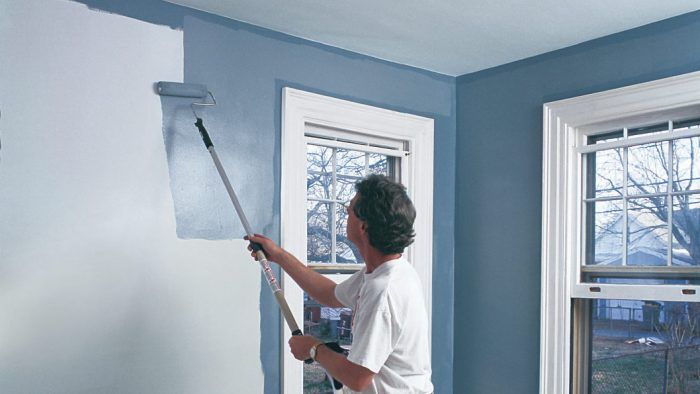Painting Walls and Ceilings
A professional's tips for rolling and edging paint as efficiently as possible without making a mess.

Synopsis: A professional painter offers tips for painting walls and ceilings, covering everything from choosing the right type of roller to cutting an edge.
Most of my friends think I’ve got the I easiest job on the planet. After all, anybody can paint walls and ceilings, right? The truth is that anybody can paint if they go about it in the right way, with the right paint and the right tools. Proper technique for cutting in and rolling is not the stuff of national secrets, but there is a lot more to it than you’ll get in the free pamphlets handed out at paint stores.
Before I open the paint can
The room I worked on for this article is one of several that needed complete refinishing in an existing home. The first thing I do when painting a room is spread professional quality canvas drop cloths to cover and protect the floor. Spilled paint doesn’t soak through canvas as it does a bed sheet or other lightweight cloth, and canvas is safer to walk on. Working on a plastic drop cloth can be like painting on roller skates.
The plaster walls in this room needed some fairly extensive patching work. In this type of situation, I start by fixing all the questionable areas, taking care not to create a lot of dust that might get into fresh paint. Next, I caulk all gaps between the trim (baseboard, window and door casing) and the walls with a high-quality paintable caulk. I smooth the caulk with a damp rag. Caulking always makes the finished paint job look better.
I also make sure that the room I’m painting has adequate lighting. Even if there is a lot of natural light, I always have halogen work lights and clip-on parabolic lights handy.
The next step is prepping and priming the trim. Painting trim is a different kettle of fish, but I make sure that the trim paint overlaps the wall about 1/8-in. When the trim is primed, I begin work on the walls and ceiling, letting the finish coat on the trim cover any stray paint from the walls.
Painting: prime time
The walls and ceilings in this room had water stains from an old roof leak that had been fixed; also, the former owners of the house were heavy smokers, which left the walls and ceilings stained. So I decided to cover everything with an alkyd-based primer/stain blocker. By the way, a respirator should always be worn when applying oil-based paint.
Even if a room has no damage, I recommend using a primer under the finish coat. It not only helps to seal the surface, but it also makes the finish coat go on more evenly, critical if I’m applying a gloss finish paint.
The two steps to painting a large area are cutting in and rolling. Cutting in is brushing paint onto areas the roller won’t reach.
For more photos and tips on painting ceilings and walls, click the View PDF button below.





